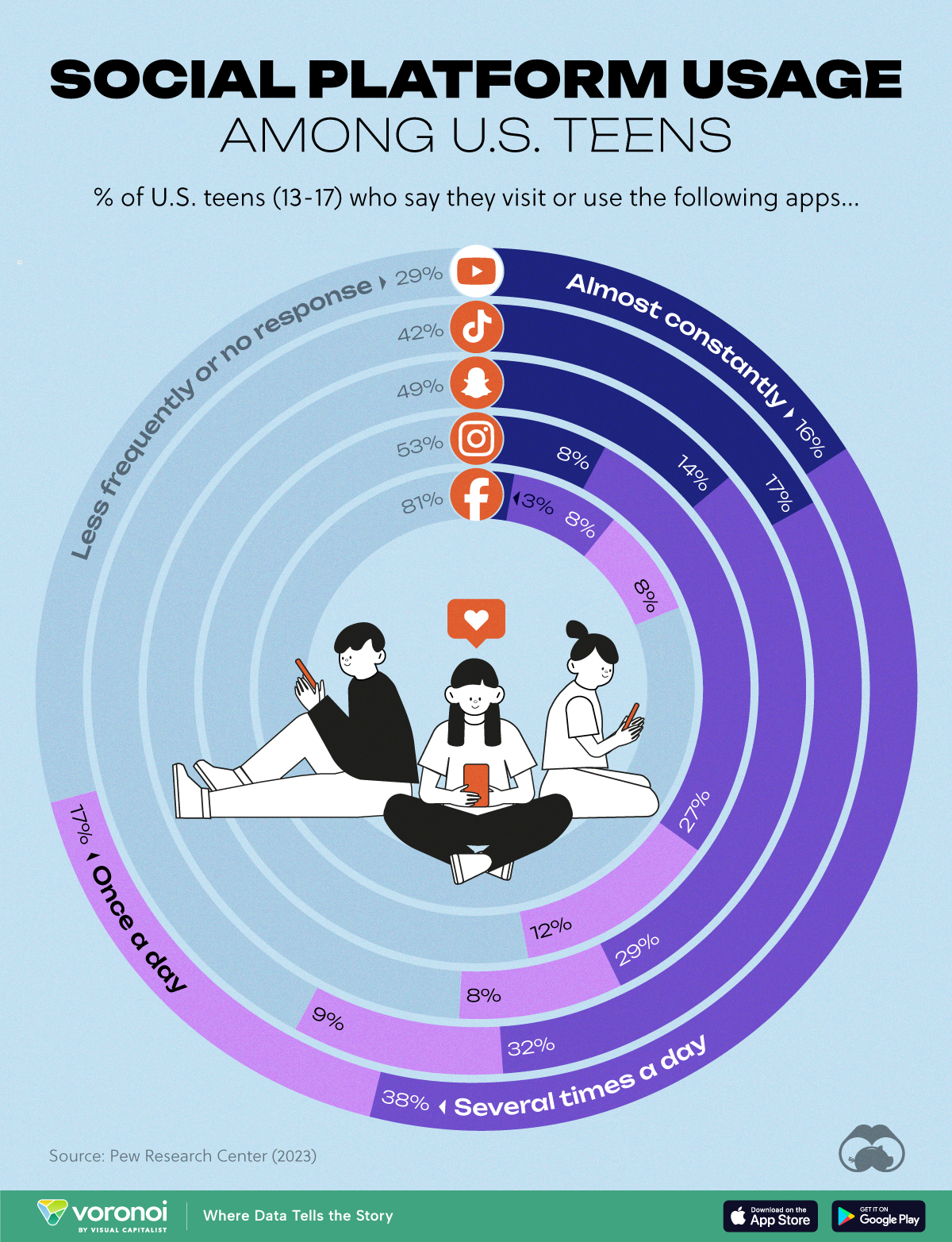![]()
See this visualization first on the Voronoi app.

Charted: Social Media Usage by U.S. Teenagers
This was originally posted on our Voronoi app. Download the app for free on iOS or Android and discover incredible data-driven charts from a variety of trusted sources.
A majority of U.S. teenagers are daily users of video platforms. Short-form videos, in particular, have become very popular, as evidenced by TikTok’s rapid rise.
In this chart, we analyze social platform usage among U.S. teenagers (ages 13-17), based on data from a recent Pew Research Center survey conducted between September and October of 2023.
The Short Video Boom
YouTube continues to be the top platform among teens, followed by TikTok, Snapchat, and Instagram. On the other hand, Facebook is increasingly viewed as the “old person’s platform”, with only one in five teenagers using the platform daily.
Meanwhile, a similar proportion of teens say they’re on YouTube and TikTok “almost constantly”, with the majority visiting these platforms daily. The survey also shows that teen girls are far more likely than boys to say they use TikTok “almost constantly”.
| Platform | Almost constantly | Several times a day | Once a day | Less frequently* |
|---|---|---|---|---|
| YouTube | 16% | 38% | 17% | 29% |
| TikTok | 17% | 32% | 9% | 42% |
| Snapchat | 14% | 29% | 8% | 49% |
| 8% | 27% | 12% | 53% | |
| 3% | 8% | 8% | 81% |
*Includes no response.
95% of teenagers in the United States have access to a smartphone (usually an iPhone), and the vast majority of teens can also access these platforms through computers (90%) and gaming consoles (83%).
Black and Hispanic teens are more likely than white teens to say they are online almost constantly, according to the Pew Research Center survey.
The study also shows that intensive usage is independent of household income. The majority of teenagers who live in households making less than $30,000 per year and those in households making over $75,000 demonstrated heavy usage of social media platforms.
The time teenagers spend on social media has been a subject of debate in recent times.
According to UNICEF, excessive passive use of social media—simply scrolling through posts—can have detrimental effects on mental health. Research links this behavior to feelings of envy, inadequacy, and reduced life satisfaction. Some studies suggest it may even contribute to symptoms of ADHD, depression, anxiety, and sleep deprivation.
The post Charted: Social Media Usage by U.S. Teenagers appeared first on Visual Capitalist.